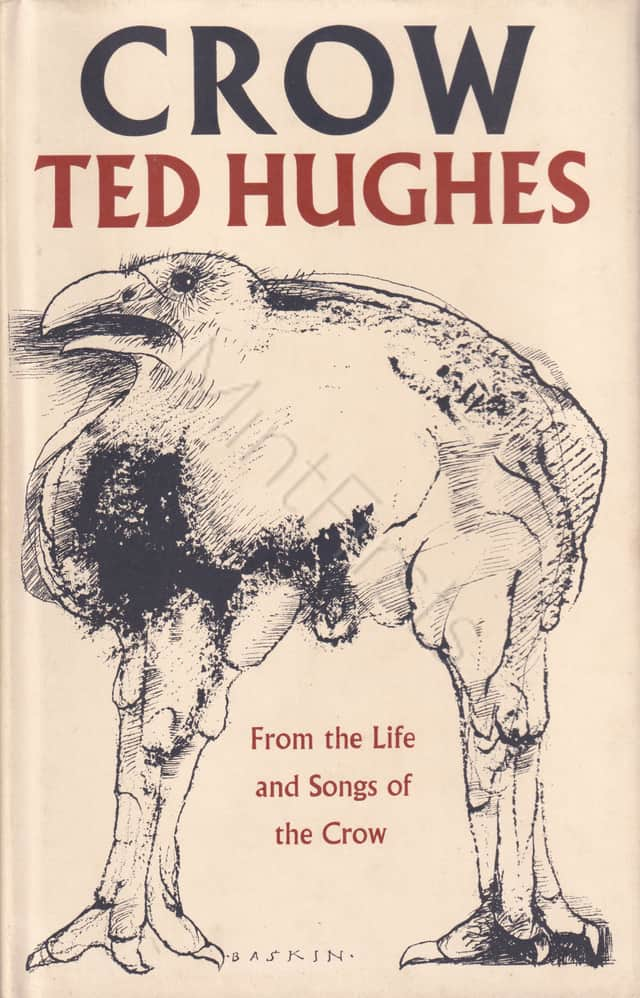Established
2004
Relaunched
2024
Our booksHow we tradeAbout usCredits & thanksYour account
- Home page
- Our books
- How we trade
- About us
- Credits & thanks
- Your account
- Your cart
MENU
Crow. From the Life and Songs of the Crow.
First edition of Ted Hughes's Crow. From the Life and Songs of the Crow.

Ted Hughes ⦗Edward James Hughes⦘; engravings by Leonard Baskin
First edition. Demy 8vo. 80pp. Black cloth, lettered in gilt to spine; cream dust wrapper with Leonard Baskin illustration, printed in brick red and black. 1/4000 copies printed. This selection of the poems was published in 1970. It was then reprinted in 1972 with seven additional poems. The following year a limited edition was brought out with three more poems. As late as 1997 Hughes put together a version that included several poems issued in subsequent collections, and omitted several that had been published in Crow.
Contents p.7/8 sustaining partial creasing and 1-inch closed tear w/out loss, light off-setting to endpapers, 1cm star shape pencilled-in to rear paste-down, light smudging to dust wrapper back panel, else Fine.
Author's fourth book of poems for adults. Written mostly between 1966 and 1969, Crow heralded an ambitious second phase in Hughes's oeuvre, lasting roughly from the late sixties to the late seventies, when he turned from direct engagement with the natural world to unified mythical narratives and sequences. Drawing from various world mythologies, the Old Testament, and aboriginal legends, he originally conceived Crow as an epic folk-tale, a prose narrative with interspersed verses.
The subject itself was suggested by the American artist, Leonard Baskin, his idea being the making of a composite book of texts and engravings, to be printed on his Gehenna Press. Dedicated to the memory of Assia Wevill and their daughter Shura whose deaths by asphyxiation in March 1969 brought the Crow poems to an abrupt halt, Hughes had embarked on the sequence following a fallow period after the suicide of Sylvia Plath.
In a 1985 article, he elaborated about the genesis of his best-known work and self-acknowledged masterpiece: "Crow grew out of an invitation by Leonard Baskin to make a book with him simply about crows. He wanted an occasion to add more crows to all the crows that flock through his sculpture, drawings, and engravings in their various transformations. As the protagonist of a book, a crow would become symbolic in any author's hands. And a symbolic crow lives a legendary life. That is how Crow took off".
"English poetry has found a new hero and nobody will be able to read or write verse now without the black shape of Crow falling across the page." –Peter Porter
[Sagar & Tabor A25a.1]
edition
first edition
format
hardback
publisher
Faber and Faber
published in
London
publication year
1970
ISBN
0571095631
pagination
80 pages
height × width
22.5 × 14.5 cm
genre
poetry
language
English
binding style
cloth
binding state
original binding
condition . . .
near fine
of jacket
near fine
GBP£ 120
EUR€ 140
USD$ 161
ref.59L YQ7